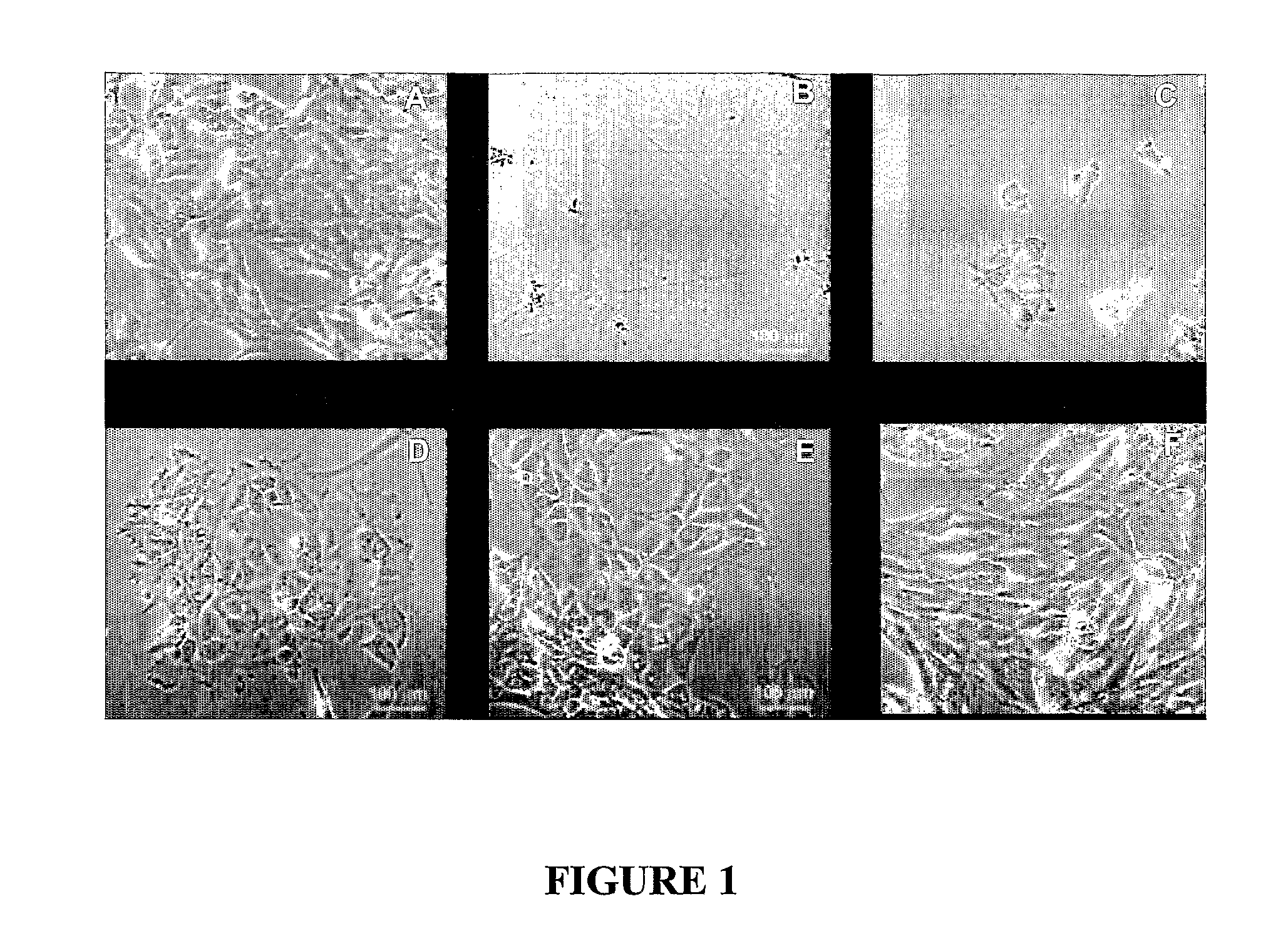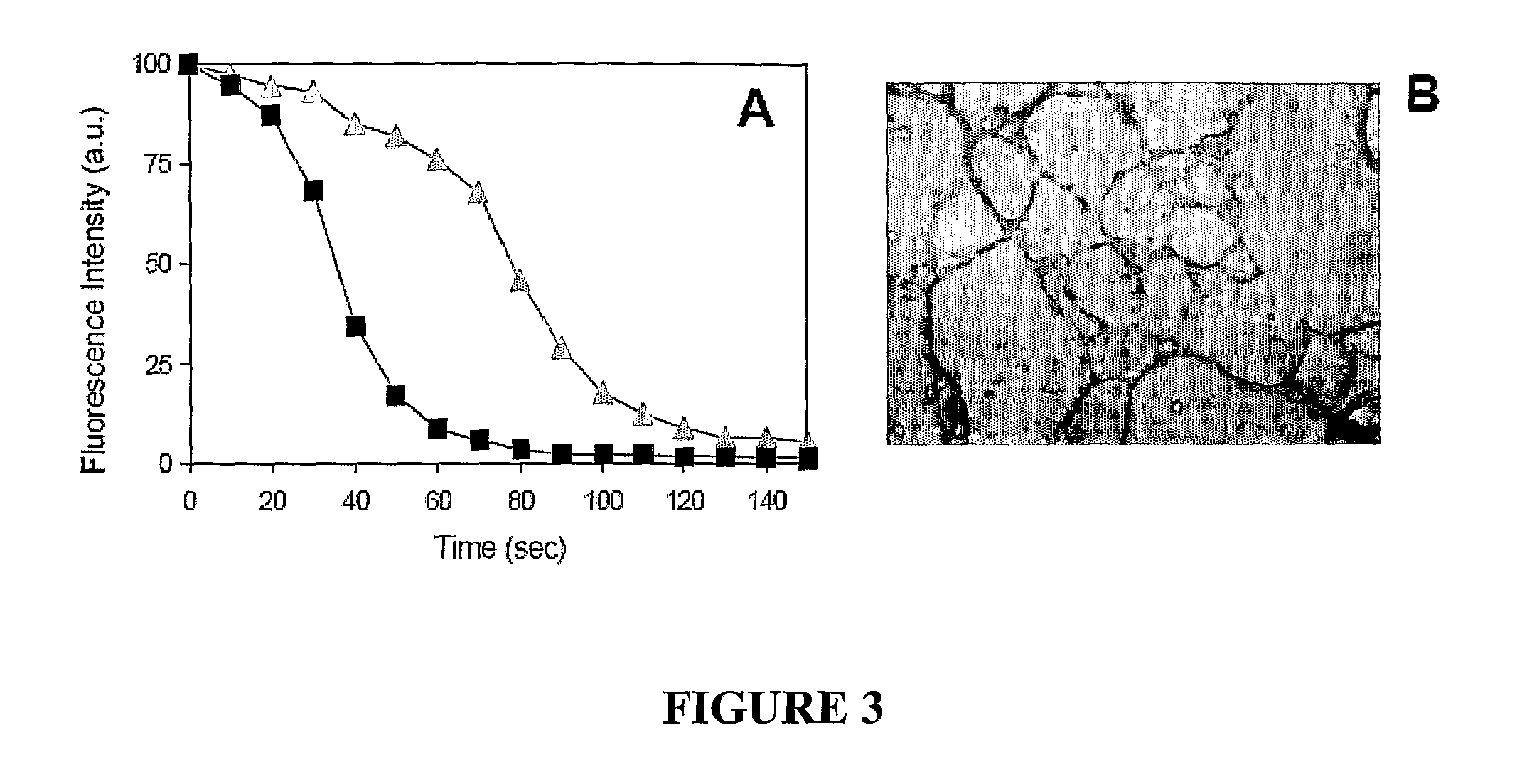Method for extracellular matrix mediated differentiation and proliferation of stem cells
- Summary
- Abstract
- Description
- Claims
- Application Information
AI Technical Summary
Benefits of technology
Problems solved by technology
Method used
Image
Examples
examples
[0085]Materials and Methods
[0086]Cell Culture
[0087]Bone marrow mesenchymal stem cells: Bone marrow mesenchymal stem cells were commercially obtained from Lonza Inc. (Cat. #PT-2501), and cultured in mesenchymal stem cell growth medium (MSCGM, Cat. #PT3001).
[0088]MEF cells and hES cells (hESCs): HUES-7 cell line (obtained from Howard Hughes Medical Institute, USA) was cultured at 37° C. with 5% CO2 on neomycin-resistant primary mouse fibroblasts (Cat. #PMEF-N, CHEMICON International, USA) in Knock-out Dulbecco's modified Eagle's medium (DMEM) (Cat. #10829018, Invitrogen, USA) and supplemented with 20% serum replacement (Cat. #10828028, Invitrogen, USA), 1% Glutamax (Cat. #35050061, Invitrogen, USA), 1% non-essential amino acid solution (Cat. #11140-050, Invitrogen, USA), 1% penicillin-streptomycin (Cat. #15070063, Invitrogen, USA), 10 ng / ml of bovine fibroblast growth factor (bFGF, Cat. #13526029, Invitrogen, USA) and 0.1% 2-beta mercaptoethanol (Cat. #21985023, Invitrogen, USA). The ...
PUM
 Login to View More
Login to View More Abstract
Description
Claims
Application Information
 Login to View More
Login to View More - R&D Engineer
- R&D Manager
- IP Professional
- Industry Leading Data Capabilities
- Powerful AI technology
- Patent DNA Extraction
Browse by: Latest US Patents, China's latest patents, Technical Efficacy Thesaurus, Application Domain, Technology Topic, Popular Technical Reports.
© 2024 PatSnap. All rights reserved.Legal|Privacy policy|Modern Slavery Act Transparency Statement|Sitemap|About US| Contact US: help@patsnap.com










